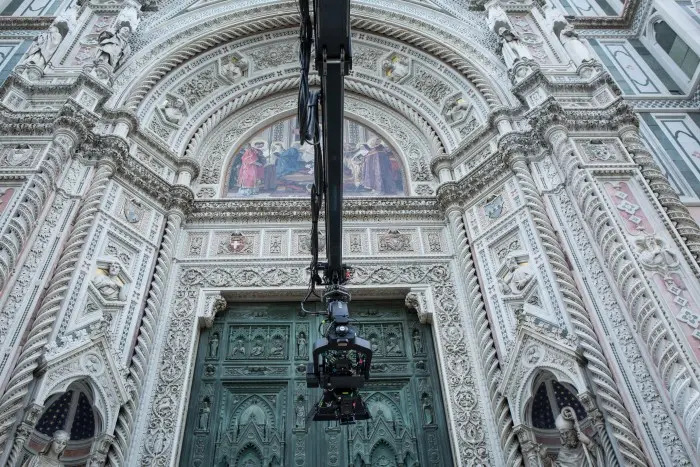

At the beginning of the 15th century, Florence invented the Renaissance and, leading the way for the rest of Europe, came out of the Medieval age. From then on, art of all forms shaped the city and allowed itself to be shaped by the city, thanks to the patronage of the Medici family, symbolised by the figure of Lorenzo the Magnificent, towards artists of the calibre of Botticelli, Ghirlandaio, Pollaiolo, Leonardo da Vinci and Michelangelo.
It was Cosimo the Elder, Lorenzo’s grandfather, who realised the genius of Brunelleschi’s plans for building the unprecedented masterpiece that is the dome of the Cathedral of Santa Maria del Fiore, which was later decorated by Vasari and Zuccari’s splendid fresco depicting the Last Judgment.
Art and culture therefore represented a burning fire fuelled by the Medici dynasty. Cosimo the Elder commissioned Palazzo Medici from Florentine architect Michelozzo, but the building’s most precious gem is its Magi Chapel, which was frescoed by Benozzo Gozzoli and features portraits of Medici family members.
In 1540, on the orders of Cosimo I, the Medici family residence was moved to the 14th-century Palazzo Vecchio in Piazza della Signoria, which is home to numerous sculptures, including a reproduction of the famous David di Michelangelo, housed in the Accademia Gallery.
It was also Cosimo I that commissioned Giorgio Vasari to build the Uffizi Gallery, which would go on to become the most visited museum in Italy and one of the most famous in the world. The gallery is home to many priceless works of incomparable beauty, such as Giotto’s Ognissanti Madonna, Piero della Francesca’s Portraits of the Duke and Duchess of Urbino, Botticelli’s Spring and the Birth of Venus, Raphael’s Madonna of the Goldfinch, Titian’s Venus of Urbino, Judith Slaying Holofernes by Artemsia da Gentileschi, and Caravaggio’s Medusa. It represents the realisation of Lorenzo the Magnificent’s dream to bring together the most beautiful works of art around under one roof.
At the beginning of the 15th century, Florence invented the Renaissance and, leading the way for the rest of Europe, came out of the Medieval age. From then on, art of all forms shaped the city and allowed itself to be shaped by the city, thanks to the patronage of the Medici family, symbolised by the figure of Lorenzo the Magnificent, towards artists of the calibre of Botticelli, Ghirlandaio, Pollaiolo, Leonardo da Vinci and Michelangelo.
It was Cosimo the Elder, Lorenzo’s grandfather, who realised the genius of Brunelleschi’s plans for building the unprecedented masterpiece that is the dome of the Cathedral of Santa Maria del Fiore, which was later decorated by Vasari and Zuccari’s splendid fresco depicting the Last Judgment.
Art and culture therefore represented a burning fire fuelled by the Medici dynasty. Cosimo the Elder commissioned Palazzo Medici from Florentine architect Michelozzo, but the building’s most precious gem is its Magi Chapel, which was frescoed by Benozzo Gozzoli and features portraits of Medici family members.
In 1540, on the orders of Cosimo I, the Medici family residence was moved to the 14th-century Palazzo Vecchio in Piazza della Signoria, which is home to numerous sculptures, including a reproduction of the famous David di Michelangelo, housed in the Accademia Gallery.
It was also Cosimo I that commissioned Giorgio Vasari to build the Uffizi Gallery, which would go on to become the most visited museum in Italy and one of the most famous in the world. The gallery is home to many priceless works of incomparable beauty, such as Giotto’s Ognissanti Madonna, Piero della Francesca’s Portraits of the Duke and Duchess of Urbino, Botticelli’s Spring and the Birth of Venus, Raphael’s Madonna of the Goldfinch, Titian’s Venus of Urbino, Judith Slaying Holofernes by Artemsia da Gentileschi, and Caravaggio’s Medusa. It represents the realisation of Lorenzo the Magnificent’s dream to bring together the most beautiful works of art around under one roof.